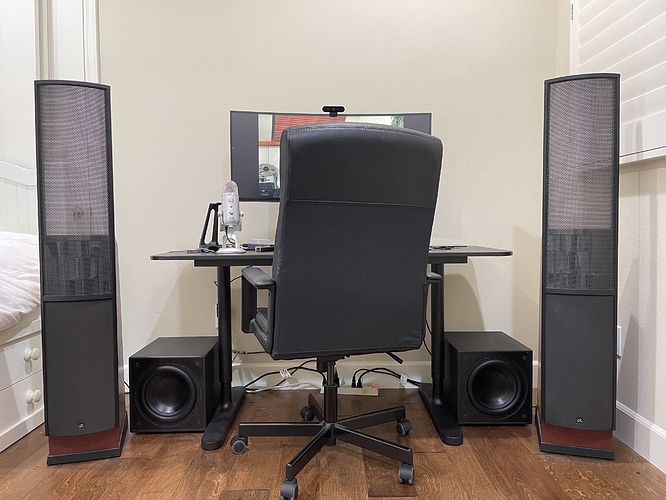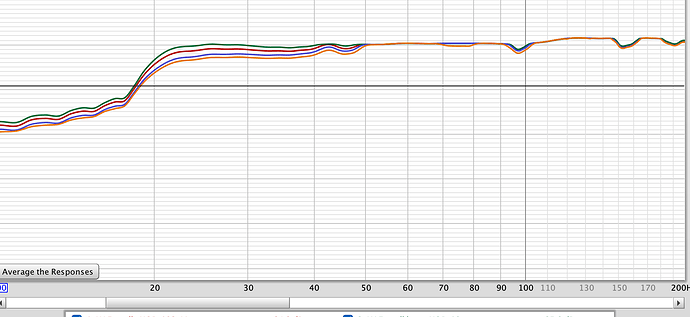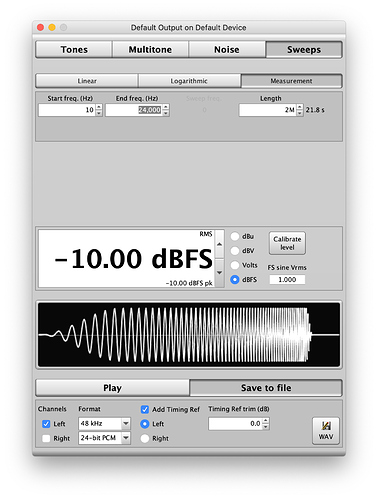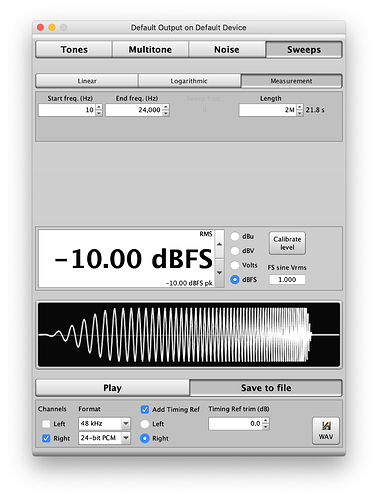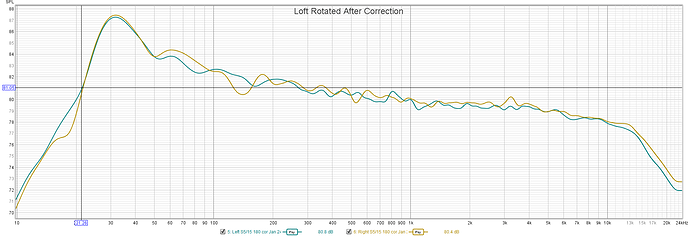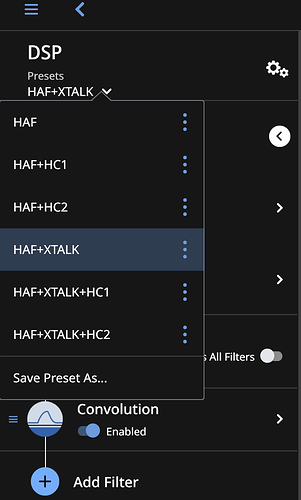I’ve not used Thierry’s service, but I have engaged @Mitch_Barnett’s help (via https://accuratesound.ca/) to discover optional filters for my room. I’m curious to know if any HAF users have tried using REW to measure the response after correction. I found this to be an interesting exercise, and it’s not difficult to do.
REW has a Generator function that you can use to save the measurement sweeps to WAV files. You can later import them into Roon and play them back through the DAC you use for day-to-day listening. It’s important to save a separate file for each channel, include a timing reference, and make sure that the timing reference is for the same channel as the sweep. For example:
Next, import these into Roon. You may want to use an ID3 tag editor to add some metadata that will make them easier to find in your library.
Place your mic in the same place you did for the measurements you sent to Thierry (equidistant to the speakers, same orientation, etc.). Then, go to REW, take a Measurement, and immediately hit “Play” in Roon using the correct file for the channel you are measuring. Make sure that the sweep sampling frequency, start and end frequencies, and length settings in REW all match exactly to the parameters you used to create the WAV files. Also make sure that you have your convolution DSP enabled with the HAF filters loaded.
This works because you included the timing reference (you did remember to do that, right?). REW will wait until it “hears” the timing reference before starting the measurement, so even if you start the sweep playback in Roon a few seconds after you tell REW to take the measurement, timing will be perfect.
You can take before and after measurements and compare them in REW, which is kind-of fun. You can also look at improvements to the step response and other parameters. For example, here’s the amplitude response in my room before correction (with Psychoacoustic smoothing enabled):
And, here’s what it looks like after (I’ve since reduced the bass by about 1 dB to tighten things up):
Lots of solutions, including Acourate and Dirac, provide plots of the predicted response after correction, but it’s pretty cool to be able to “independently verify” the actual response using Roon + REW.
